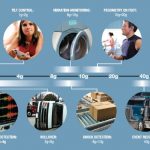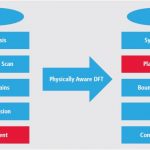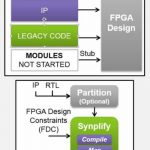The term “human machine interface” originated from the factory floor. In the context of HMI, machine refers not to the computer, but to a machine tool or other instrument the computer was attached to. For decades, if an HMI was needed, it was implemented on a PC or single-board computer running Microsoft Windows. Real-time processing… Read More
Electronic Design Automation
MEMS Require 3D Field Solver for Accurate Cap Values
MEMS devices have become extremely important and common. Freescale last year reported its combined MEMS shipments exceeded 2 billion units. If we just examine how many accelerometers we each probably own today, it is easy to see why the market for these products is growing so rapidly. The first and most obvious device is our cell… Read More
Physically Aware DFT Improves PPA
Introducing on-chip test circuitry has become a necessary criteria for an ASIC’s post manufacture testability. The test circuitry is usually referred as DFT (Design-for-Test) circuit. A typical methodology for introducing DFT circuit in a design is to replace usual flip-flops with special types of flip-flops called ‘scan… Read More
Secure Processor for IoT
In my last blog “Processor for IoT” I have discussed security as one of the key requirements for processor used in IoT devices. In this blog we will analyze different method of hacking and some techniques which can be used to prevent those security breaches.
One of the common ways of attack is to probe address and data … Read More
Do You Need a Silicon Catalyst?
Lately there has been significant concern over the rising costs of designing in silicon and the troubling decline in venture investments in semiconductors. These alarming trends include fewer IPOs, a falloff in the amount and frequency of early stage seed investments, and comparatively low industry organic growth rates. A … Read More
More Test Points are Better
I got really involved in testability back at CrossCheck in the 1990’s when they designed a way for Gate Arrays to have 100% observability without any Design For Test (DFT) requirements on designers. The Japanese Gate Array companies loved this approach and their customers enjoyed the highest test coverage without being… Read More
A Comprehensive Automated Assertion Based Verification
Using an assertion is a sure shot method to detect an error at its source, which may be buried deep within a design. It does not depend on a test bench or checker, and can fire automatically as soon as a violation occurs. However, writing assertions manually is very difficult and time consuming. To do so require deep design and coding… Read More
Dealing with FPGA IP in all its forms
One of the recurring themes I see here in the pages of SemiWiki and elsewhere is this pitched, bordering on religious battle between Altera and Xilinx. Just because both are FPGA technologies, the tendency is to put them in the same bucket, drawing direct comparisons between them. Some folks say there is no comparison; Xilinx has… Read More
ADAS Going Mainstream One Chip at a Time
Advanced Driving Assistance Systems (ADAS) are an essential element in the vision of autonomous or semi-autonomous vehicles, and they are becoming available today. The ADAS automotive technology raises driving safety by detecting obstacles around the vehicle such as other vehicles and pedestrians, as well as traffic signs… Read More
How Well is HSPICE Tracking Current Design Trends?
For about 5 years now Synopsys has held an HSPICE SIG event in conjunction with DesignCon. It features a small vendor faire with companies that partner with Synopsys on HSPICE flows. They also have a dinner with industry/customer speakers and provide an update on HSPICE development. Lastly there is a Q&A where customers get… Read More







AI RTL Generation versus AI RTL Verification